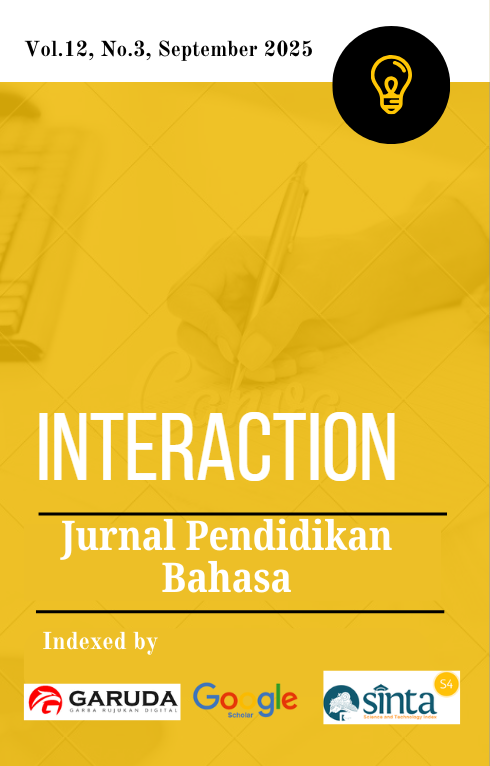The Teachers’ Perceptions of Students’ Vocabulary Mastery through ESA
DOI:
https://doi.org/10.36232/interactionjournal.v12i3.3593Keywords:
ESA Method, Vocabulary Mastery, Teacher PerceptionAbstract
Vocabulary mastery plays a central role in English language development, as it enables learners to understand, use, and communicate ideas effectively. However, many students often struggle to retain and apply new vocabulary, which makes the choice of teaching method especially important. One approach that has gained attention is the Engage, Study, and Activate (ESA) method, which combines motivational activities, structured Study, and communicative practice. This Study aimed to explore English teachers' perceptions of the ESA method in enhancing students' vocabulary mastery and to identify which aspects of the method they found most effective in classroom practice. The research employed a descriptive quantitative design with survey data collected from ten English teachers at the elementary and junior high school levels. The instrument used was a questionnaire consisting of 37 items, adapted from established models, and designed to capture perceptions across the three ESA stages. Responses were measured on a five-point Likert scale and analyzed using descriptive statistics, including mean scores, percentages, and standard deviations. Findings revealed that the majority of teachers hold positive perceptions toward the ESA method. Teachers emphasized that the Engage phase helps capture students' attention and motivation, the Study phase provides essential accuracy and explanation of vocabulary, and the Activate phase encourages meaningful use of words through role-plays, discussions, and collaborative activities. The highest-rated item concerned the role of question-and-answer activities in motivating learners (M = 4.60). At the same time, the lowest rating reflected concerns about group work consuming too much classroom time (M = 2.90). Overall, the results suggest that teachers view ESA as an effective, flexible, and student-centered approach for improving vocabulary learning in EFL contexts.Downloads
Published
2025-09-30
How to Cite
Putri Ali Puspitaningrum, Abdul Syahid, & Sri Normuliati. (2025). The Teachers’ Perceptions of Students’ Vocabulary Mastery through ESA. INTERACTION: Jurnal Pendidikan Bahasa, 12(3), 436–452. https://doi.org/10.36232/interactionjournal.v12i3.3593
Issue
Section
Articles








